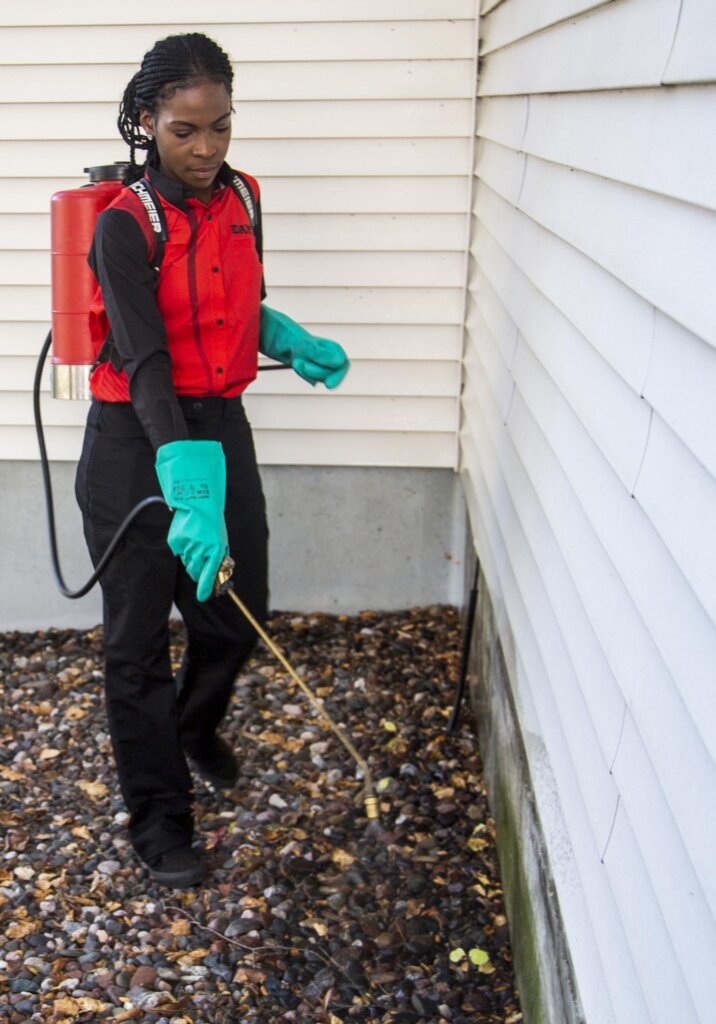Trusted Solutions for Rodents and Bugs from Pest Control Lockhart
Trusted Solutions for Rodents and Bugs from Pest Control Lockhart
Blog Article
Discovering Invasion and Therapy Methods on the planet of Parasite Control
The landscape of bug control encompasses a myriad of obstacles, especially as problems of typical household bugs remain to progress. Understanding the actions and reproductive patterns of these problems is critical for establishing reliable treatment approaches. By integrating safety nets with innovative management methods, such as Integrated Pest Administration (IPM), homeowners can much better safeguard their atmospheres. The performance of these methods might differ significantly based on particular circumstances. What underlying aspects add to the success or failure of these techniques in various setups?

Typical Family Vermin
When it involves handling our space, understanding common home insects is critical. These parasites not just disrupt our comfort but can also pose health risks and damage residential or commercial property. The most common home insects include ants, cockroaches, rodents, termites, and bed bugs.
Ants, commonly seen foraging in kitchen areas, can contaminate food and develop large swarms. Rodents, consisting of mice and rats, can cause architectural damage and lug diseases like hantavirus and salmonella.
Identifying the indications of these pests, such as droppings, nests, or attack marks, is important for very early intervention (Pest Control Lockhart). Correct cleanliness techniques, sealing access points, and keeping a clutter-free atmosphere work preventative procedures. By identifying these typical house insects and understanding their actions, property owners can take aggressive steps to minimize infestations, making certain a healthier living setting
Understanding Parasite Infestations
Parasite infestations can intensify promptly, turning a small aggravation into a considerable trouble if not addressed quickly. Typical elements contributing to invasions consist of inadequate hygiene, architectural susceptabilities, and seasonal changes that drive pests indoors.
Identifying the kind of insect is vital, as various types show diverse behaviors and reproductive prices. Rats may establish nests in surprise locations while pests like roaches flourish in damp environments. Early detection often hinges on acknowledging indications such as droppings, munch marks, or unusual audios, which can show a trouble before it comes to be serious.
Environmental problems likewise play a crucial role in parasite expansion. Warm, moist environments can help with the rapid development of insect populations, while modifications in landscaping or construction can accidentally produce helpful atmospheres. Regular assessments and preventative steps are extremely important to reducing the threat of invasions. An enlightened method to recognizing these dynamics prepares for effective bug management methods in the future.
Therapy Approaches and Techniques
Efficient therapy approaches and techniques are vital for minimizing pest infestations and bring back a risk-free setting. A multifaceted method is typically best, including chemical, organic, and mechanical strategies tailored to the specific insect and the seriousness of the invasion.
Chemical therapies consist of using pesticides and herbicides, which can properly remove parasites. Appropriate application and adherence to security standards are critical to minimize risks to human beings and non-target microorganisms. Integrated Parasite Monitoring (IPM) urges the judicious use chemicals as a last option, counting rather on tracking and threshold levels to identify intervention requirements.
Biological control approaches include introducing all-natural predators or parasites to lower insect populations. This approach is significantly prominent, specifically in agricultural settings, as it promotes environmental sustainability.
Mechanical techniques, such as traps and obstacles, offer instant remedy for pests without presenting chemicals. Alternatives consist of sticky catches for insects or physical obstacles for rats.
Eventually, the choice of therapy technique should take into consideration the particular parasite, the atmosphere, and possible impacts on human wellness and communities. A well balanced combination of these methods can effectively handle problems while promoting long-lasting pest control services.
Preventative Steps for Residence
Proactively dealing with bug issues before they rise is vital for preserving a healthy and balanced home environment (Pest Control Lockhart). Carrying out reliable safety nets can significantly decrease the probability of problems, eventually securing both your home and health

Proper landscaping also plays a vital role in prevention. Keeping bushes and trees cut away from your home decreases the possibilities of insects discovering their method inside your home. Moreover, make sure that water drainage systems are functioning effectively to stop standing water, which can pull in insects and various other pests.
Lastly, routine inspections site are advisable. Regularly looking for indicators of bug activity allows for early treatment. By embracing these safety nets, home owners can produce an atmosphere that is less hospitable to parasites, therefore improving their overall lifestyle and lowering the requirement for extensive pest control treatments.
Industrial Pest Control Approaches
An extensive approach to business bug control is important for organizations aiming to maintain a secure and hygienic atmosphere. Effective methods include a combination of normal evaluations, staff member training, and the implementation of Integrated Bug Monitoring (IPM) practices.
Routine examinations allow early detection of insect task, enabling timely intervention. Companies ought to establish a routine schedule for these assessments, concentrating on risky locations such as kitchens, storeroom, and garbage disposal sites. Staff member training is equally essential; team needs to be enlightened on the signs of parasite infestations and the significance of reporting them promptly.
Applying IPM practices assists minimize parasite problems sustainably. This consists of environment modification, such as securing entrance factors and lowering mess, along with using all-natural deterrents before turning to chemical treatments.

Moreover, collaborating with a licensed parasite control company makes certain accessibility to expert expertise and innovative treatment choices. This collaboration can result in customized pest control plans customized to the certain requirements of business, minimizing dangers anchor and boosting total efficacy. Ultimately, an aggressive and educated approach fosters a pest-free environment, securing both public health and wellness and company online reputation.
Conclusion
In final thought, efficient pest control demands a thorough understanding of usual house bugs and their actions, paired with targeted therapy methods. Implementing preventive measures alongside therapy strategies such as Integrated Pest Management and organic control boosts the ability to reduce invasions.
Report this page